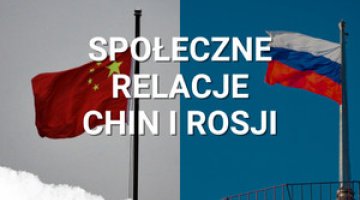The ‘new’ arrangements in Russian-Chinese energy cooperation
On 9 November, during President Vladimir Putin’s visit to Beijing (one day ahead of the APEC summit), another package of Russian-Chinese agreements regarding the energy sector was signed. This included: agreements envisaging the annual supplies of 30 billion m3 of natural gas from Russia to China along the so-called ‘western route’ (the Altai project; it provides for gas supplies from Western Siberia to north-western China) and an agreement under which China’s CNPC acquired a 10% share in the Vankor field (Krasnoyarsk Krai) owned by Rosneft. Gazprom’s CEO announced that his company would not receive the previously negotiated Chinese loan of US$25 billion for the construction of the Power of Siberia pipeline (Irkutsk Oblast–Yakutia–Khabarovsk–Vladivostok). In turn, Chinese banks have expressed they are prepared to grant loans for the Yamal-LNG project (at least US$10 billion).
Commentary
- The agreements concerning the Altai project provide a further example of Gazprom’s propaganda of success. These are nothing more than framework agreements and thus do no more than reiterate the arrangements previously made by the parties (supplies via the ‘western route’ have been discussed since 1998, and framework agreements regarding this issue were signed for example in 2006 and 2010). In turn, talks regarding the key issues (supply prices and financing of the project) which need to be agreed upon before a possible contract is signed, have just begun. Gazprom has announced that the negotiations will be closed in 2015, which would enable the launch of supplies in 2020–2021. Russia has been pushing through the Altai project mainly for political reasons – this could be used as a potential means of applying pressure on the European recipients of Russian gas (because the new pipeline would be used to export gas from Western Siberian fields, which are also a source of gas supplies to Europe). However, considering the way in which the negotiations concerning the supplies via the eastern route have been developing so far and the fact that Beijing has shown little interest in the Altai project (the north-western regions of China receive natural gas mainly form Central Asia), it is quite likely that Gazprom’s plans could be delayed.
- Since Gazprom has not received the Chinese loan, plans to supply natural gas to China via the so-called ‘eastern route’ may change. The estimated costs of development of Eastern Siberian fields and to construct Power of Siberia are very high—US$55–70 billion in total. In turn, Gazprom is in a difficult financial situation at present and is unlikely to increase its investment budget in the next few years. Therefore, it cannot be ruled out that the lack of external funding will delay the construction of Power of Siberia or force Gazprom to withdraw from other investments in the East (e.g. the Vladivostok-LNG project).
- The agreement under which CNPC has acquired a 10% share in the Vankor field is proof of China’s increasing interest in investing in the Russian upstream sector. Another illustration of this tendency is provided by the framework agreement concluded by Gazprom and China’s CNOOC (China National Offshore Oil Corporation) concerning investments in Russian gas fields, and Chinese banks’ readiness to offer loans for the Yamal-LNG project (CNPC holds a 20% stake in it). President Putin has declared that Russia is ready to accept the new terms of co-operation imposed by Beijing in order to receive Chinese investments. These terms include the requirement that China will have representatives in the senior management of the companies in charge of the projects, and that the transactions will be settled in Chinese yuan. Thus the asymmetry in Sino-Russian relations in the energy sector will become more entrenched.




